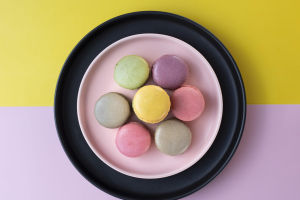Creating a ceramic vase is a meticulous and artistic process involving several intricate steps, each crucial to achieving a masterpiece of high aesthetic value.
From material selection to finishing touches, every stage demands precision and skill from the artisan.
1. Material Preparation: The process begins with selecting ceramic materials suitable for crafting vases, such as terra cotta or porcelain clay. Artisans carefully choose pottery clay with different formulas to cater to varying needs, including color, texture, and plasticity.
2. Forming: Next comes shaping the ceramic material into a vase. This can be achieved through various methods, including using a potter's wheel, hand modeling, or molds. Artists employ techniques such as drawing, extruding, kneading, or carving to imbue each vase with unique forms and textures, adding a personalized touch to their creations.
3. Drying and Finishing: After the initial molding, the vase undergoes a drying process to remove moisture and stabilize its structure. Throughout this stage, artisans may trim and repair the vase to ensure its integrity and balance. Proper drying is essential to prevent cracking or warping during firing.
4. Firing: Once dried, the vase enters the firing stage, where it is subjected to high temperatures in a kiln. The firing temperature and duration depend on the type and thickness of the ceramic material. During this process, the ceramic undergoes chemical and physical transformations, hardening and retaining its shape permanently.
5. Glazing and Decorating: Following firing, the vase is ready for glazing and decoration. Glazing adds luster and protection while enhancing the vase's appearance. Artisans employ various decorative techniques such as painting, decorative layer, and engraving to embellish the vase, elevating its visual appeal and artistic value.
Temperature control during firing is particularly critical. Insufficient firing temperatures can result in rough surfaces and poorly melted glazes, detracting from the vase's beauty. Conversely, excessive temperatures can cause glaze gas to burst, leading to deformities. Therefore, precise temperature management is essential, tailored to the characteristics of different ceramics and glazes.
In addition to aesthetics, practicality and stability are paramount in the design process. A vase must be visually pleasing and functional, capable of supporting floral arrangements and water without toppling over. Designers carefully craft vase shapes and bases to ensure stability and balance, enhancing both form and function.
The finishing stage offers opportunities for further refinement and customization. Artisans may use carving tools to add intricate patterns or employ decals to incorporate designs or text, enhancing the vase's decorative effect. Materials such as wire and beads can be skillfully inlaid to impart texture and depth.
Finishing touches play a crucial role in determining the final quality of the vase. Engraving and inlaying require skilled craftsmanship to ensure precision and durability, while coloring demands experienced artists to achieve vibrant hues and detailed designs. Each embellishment contributes to the vase's overall beauty, transforming it from a mere vessel into a captivating work of art.
In essence, the creation of a ceramic vase is a labor of love, blending craftsmanship, creativity, and technical expertise to produce objects of enduring beauty and utility. Through meticulous attention to detail and a dedication to excellence, artisans breathe life into clay, shaping it into vessels that transcend mere functionality, becoming cherished artifacts that enrich our lives.


